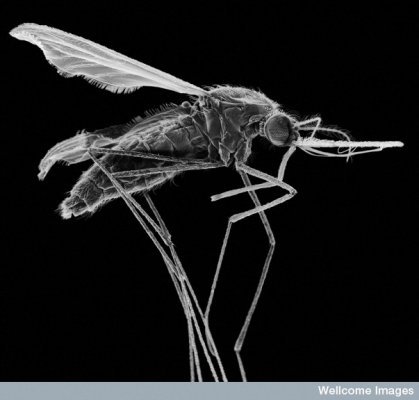Dominant multidrug resistant malaria threatens elimination
In a new study out this week in the Lancet Infectious Diseases, researchers have found that a dominant strain of drug resistant falciparum malaria, first detected in 2008 in Cambodia, has spread to other countries in the Greater Mekong Sub-region of Southeast Asia.

As it spreads across the region, the dominant parasite strain has superseded many other artemisinin resistant malaria strains that have independently emerged in Cambodia, Laos and Thailand in an evolutionary process of adaption known as ‘selective sweeping’.
This study confirms that artemisinin drug resistance has spread from one location to another as well as emerged independently in different parts of the region. Whether artemisinin resistance has spread or emerges independently has been a hotly debated topic over the past few years.
In an even more worrying turn, along the way this dominant strain has also acquired resistance to the important artemisinin partner drug piperaquine to create a multidrug resistant form of the malaria parasite.
“We now see this very successful resistant parasite lineage emerging, outcompeting its peers, and spreading over a wide area. It has also picked up resistance to the partner drug piperaquine, causing high failure rates of the widely used artemisinin combination therapy DHA-piperaquine” says study lead author Prof. Arjen Dondorp, Head of Malaria and Deputy Head of the Mahidol Oxford Tropical Medicine Research Unit (MORU) in Thailand, Asia. “We hope this evidence will be used to reemphasize the urgency of malaria elimination in the Asia-region before falciparum malaria becomes close to untreatable.”
The team collected 434 samples of artemisinin resistant malaria from between 2008 and 2015. The dominant mutation, PfKelch13 C580Y haplotype, was present in 65 of 88 samples from north-eastern Thailand, 86 of 111 samples from southern Laos and 14 of 14 samples from Cambodia. These results indicate that this ‘fitter’ mutation is abiding by the laws of natural selection and is a favourable adaption for the falciparum malaria parasite over other similar mutations linked to artemisinin resistance that emerged independently.
This strain has spread from Cambodia, through Laos and into Thailand. Based on the genetic information, there was no evidence of this dominant mutation found in samples from Myanmar where artemisinin resistance has also emerged.
The artemisinin combination therapy (ACT) dihydroartemisinin piperaquine (DP) is a recommended and widely used treatment against falciparum malaria. The potential spread of this multidrug resistance to the artemisinin derivative and partner drug poses a serious threat to global control of malaria. If resistance spreads from Asia to the African continent, or emerges independently in Africa, as we’ve seen several times in the past, there is a chance that many millions of people will be at risk of failing malaria treatment.
“We are losing a dangerous race to eliminate artemisinin resistant falciparum malaria before resistance to the partner antimalarials makes that impossible,” said study contributor and Mahidol and Oxford Prof Sir Nick White. “History is repeating itself; the consequences for India and Africa could be grave.”
The identification of the K13 markers of artemisinin resistance, such as this dominant mutation, transformed our ability to monitor the spread and emergence of artemisinin resistance. WWARN has developed an interactive map to show the global distribution of K13 molecular markers across time. This tool equips policy makers with up to date information on the spread and emergence of K13 markers to better inform elimination efforts.
A recent study from WWARN and MORU used pooled analyses to enable revised dose regimens for DP to prolong its efficacy for as long as possible. Results from this study were used by the WHO expert review panel’s decision to update the Guidelines for the treatment of malaria.
"We are observing a selective sweep wherein multiple strains of drug resistant parasites are being overcome by a lineage of successful multi-drug resistant parasites which represent a major threat to malaria control and elimination across the region,” adds Dr Mehul Dhorda, Asia Regional Director at WWARN & IDDO. “The tools for standardised data collection and pooled analyses being developed at WWARN will be useful in tackling the problem of resistance by helping to provide up-to-date evidence needed by policy makers to prolong the efficacy of ACT treatments and to implement new approaches to treatment."
Although resistance is prevalent for both artemisinin derivatives and their partner drugs, this does not mean that these treatments are failing completely. Changing dosing regimens such as increasing the dose or prolonging the treatment regimen may maintain the efficacy of these ACTs a while longer. Novel treatment approaches such as triple combination therapies are also being tested in Asia. WWARN is supporting the global research drive to find the best ways to ensure that these drugs are treating patients effectively and safely for as long as possible.
Publication details:
Imwong M, et al. The spread of artemisinin-resistant Plasmodium falciparum in the Greater Mekong Subregion: a molecular epidemiology observational study. Lancet Infectious Diseases. Published online 23:30 GMT 1st February 2017. >
